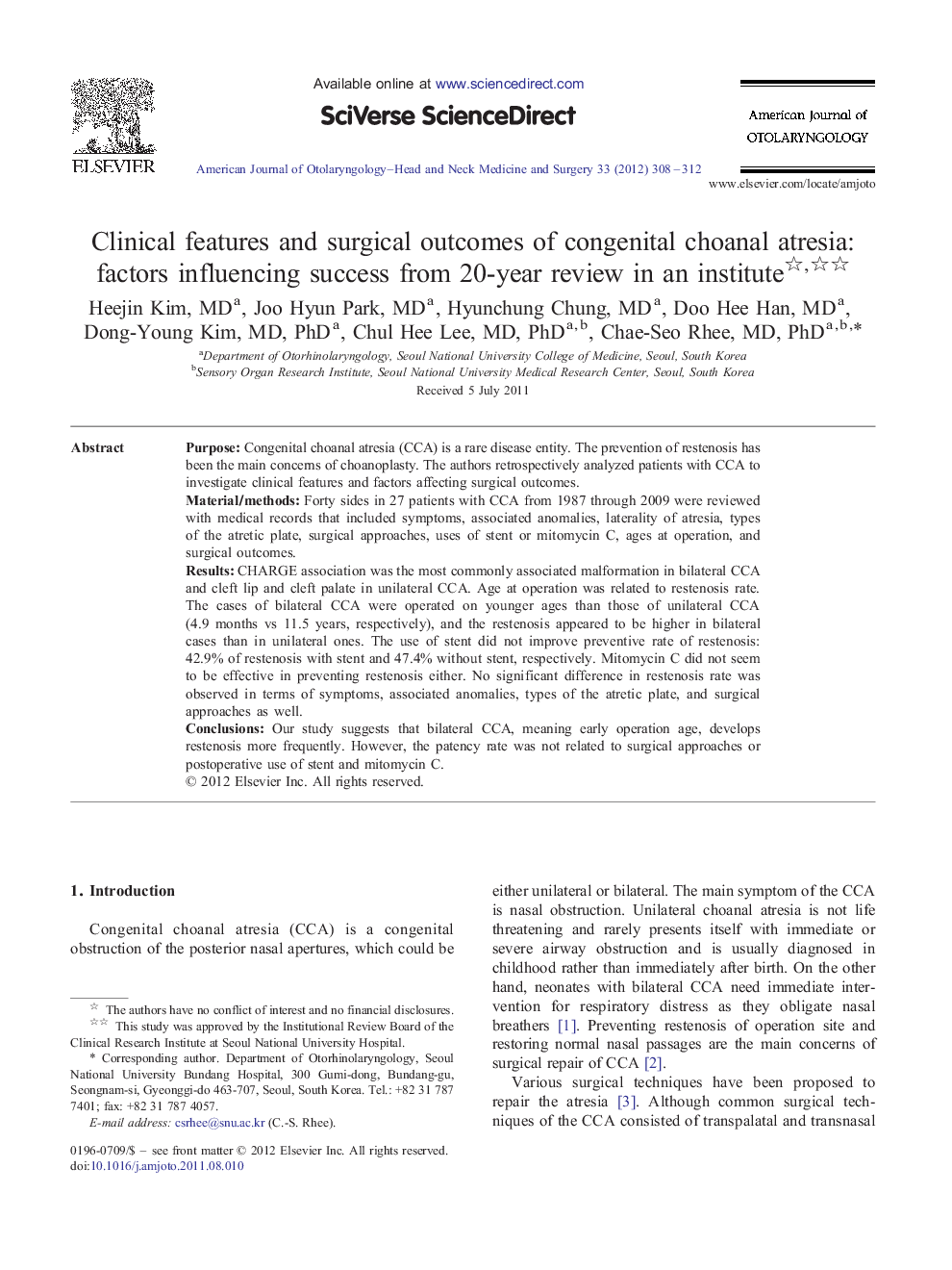| Article ID | Journal | Published Year | Pages | File Type |
|---|---|---|---|---|
| 4103631 | American Journal of Otolaryngology | 2012 | 5 Pages |
PurposeCongenital choanal atresia (CCA) is a rare disease entity. The prevention of restenosis has been the main concerns of choanoplasty. The authors retrospectively analyzed patients with CCA to investigate clinical features and factors affecting surgical outcomes.Material/methodsForty sides in 27 patients with CCA from 1987 through 2009 were reviewed with medical records that included symptoms, associated anomalies, laterality of atresia, types of the atretic plate, surgical approaches, uses of stent or mitomycin C, ages at operation, and surgical outcomes.ResultsCHARGE association was the most commonly associated malformation in bilateral CCA and cleft lip and cleft palate in unilateral CCA. Age at operation was related to restenosis rate. The cases of bilateral CCA were operated on younger ages than those of unilateral CCA (4.9 months vs 11.5 years, respectively), and the restenosis appeared to be higher in bilateral cases than in unilateral ones. The use of stent did not improve preventive rate of restenosis: 42.9% of restenosis with stent and 47.4% without stent, respectively. Mitomycin C did not seem to be effective in preventing restenosis either. No significant difference in restenosis rate was observed in terms of symptoms, associated anomalies, types of the atretic plate, and surgical approaches as well.ConclusionsOur study suggests that bilateral CCA, meaning early operation age, develops restenosis more frequently. However, the patency rate was not related to surgical approaches or postoperative use of stent and mitomycin C.
